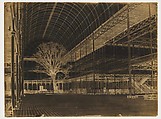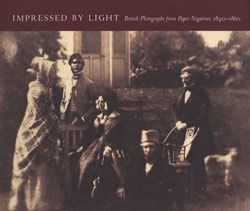Crystal Palace, Hyde Park, Transept
Benjamin Brecknell Turner British
Not on view
Like many early practitioners, Turner was a gentleman amateur for whom photography was a passion, not a profession. He took up photography in 1849, when the medium was barely a decade old. He was thirty-four, recently married, and had worked in the family's candle and saddle-soap business since age sixteen. His decision to purchase a larger camera, capable of making negatives as ambitious in scale as this one, was surely prompted by the photographs he had seen at the Great Exhibition and set him apart from his British contemporaries. (As no practical means of enlarging existed in the 1850s, a large photograph required an equally large negative and a camera big enough to accommodate it.)
Turner's view shows the interior of the Crystal Palace, Joseph Paxton's vast iron and glass pavilion built to house the Great Exhibition, after its six million visitors had left and its thousands of exhibits had been removed-an enormous empty hothouse built around an ancient elm. The lacy networks of tree branches and iron trusses form a visual metaphor for nature and industry, tradition and modernity-issues central to Victorian identity and art.
Due to rights restrictions, this image cannot be enlarged, viewed at full screen, or downloaded.


